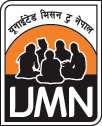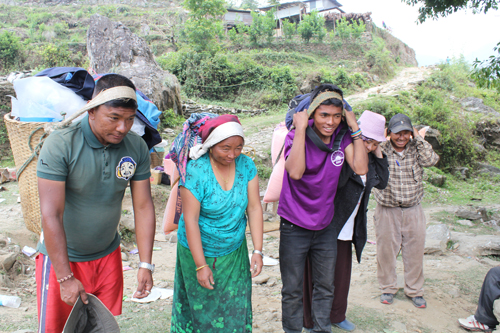Nepalese people have a strong attachment to their “home place”, their family village. Even city-dwellers will try to return to their village at least once a year, for festivals. Marriages, funerals, important community events draw people “home”, even if they’ve lived in the city most of their lives.
About 780 people used to live in Tawal village in Ree VDC, but since the earthquake, more and more people are moving away in search of safety, security and schooling. Local people like Frame Singh Tamang are afraid that this will be just as destructive to their community as the earthquake itself.
This isn’t surprising. Tawal village had about 137 families, and a high school attended by 403 students from Grade 1 to 10. Now most of the houses are gone, and the school is flattened. People here used to grow enough rice and corn for 4-5 months of the year, and earn additional income making baskets from the bamboo which grew in the forest. But now, most of the bamboo groves have disappeared in a landslide triggered by the quake. People are leaving, and Frame Singh wonders if they’ll ever come back.
He and his wife Aaiti are staying, although their son will have to go somewhere else to complete his studies. Frame Singh wants to help rebuilt Tawal, but the villagers are afraid of further landslides in the coming monsoon season. In the meantime, families are managing under what shelter they can find. When he heard of the UMN food distribution, Frame Singh was very pleased to volunteer to help, before collecting his own allocation and setting out for the 5 hour walk back home to Tawal.
You can rebuild your house, but is it possible to rebuild a shattered community?
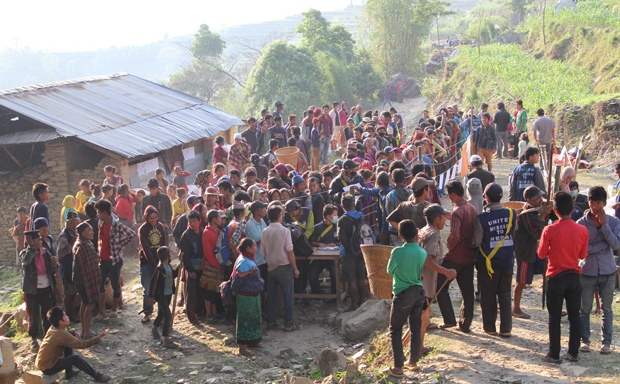
Villagers wait in Chimchok for the relief supplies to be distributed.
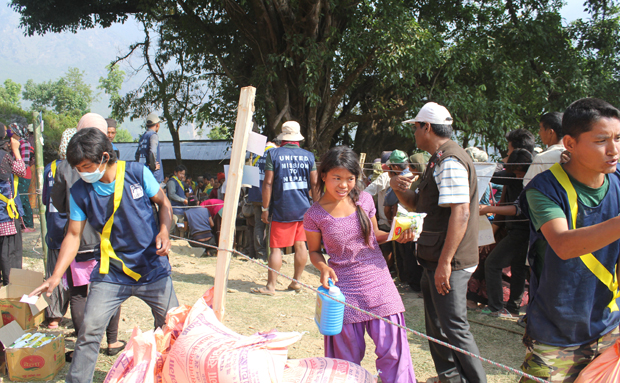
Frame Singh (red shorts & blue UMN vest) helps manage the food distribution.
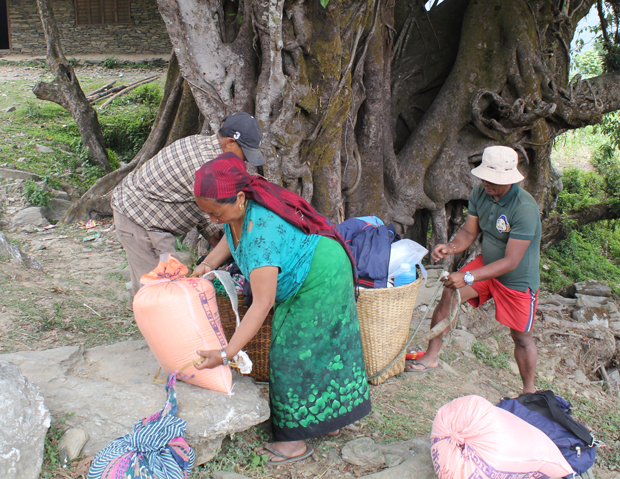
Frame Singh and Aaiti get their goods ready to
carry away.
